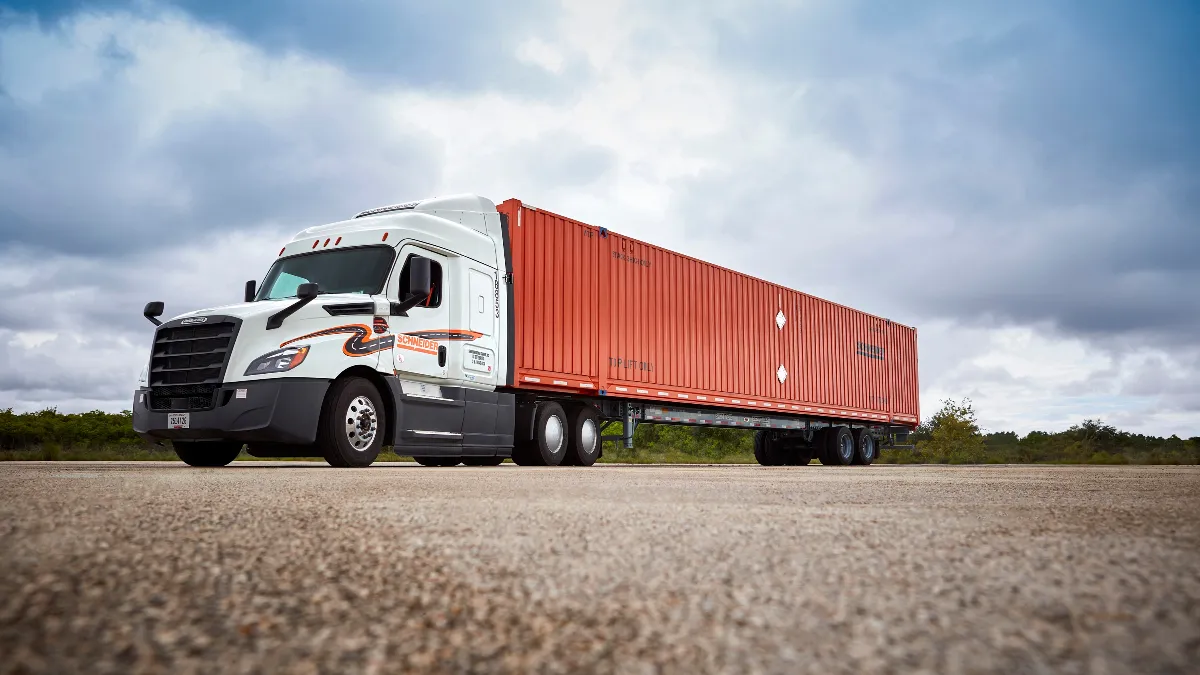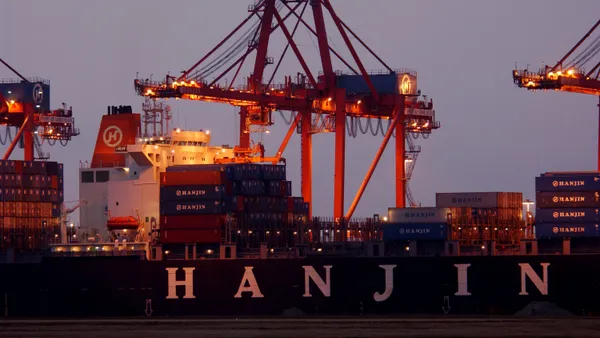Dive Brief:
- Schneider has been expanding its fleet of containers in the U.S., using ocean-carrier capacity secured by its Asia-based operations to deliver the equipment, CEO Mark Rourke said during the company's Q3 earnings call Thursday.
- Schneider added 1,600 containers in Q3 and expects to add at least another 1,600 in Q4, Rourke said. That would exceed the company's expectation of adding between 1,500 and 3,000 containers in the second half of 2021.
- "We do not talk about our Asia operations very often, but their efforts in helping us secure dedicated vessel capacity for intermodal containers are making a real difference," Rourke said.
Dive Insight:
Chartering ships became trendy for retailers looking to mitigate at least some of the bottlenecks affecting supply chain stakeholders. With freight rates high, capacity limited and other delays looming, large shippers such as The Home Depot and Ikea took this atypical, and expensive, approach.
While the retailers focused on getting consumer goods to the U.S., Schneider's focus is on boxes. A supply-demand imbalance of intermodal containers, while an inconvenience for many, presented Schneider with a growth opportunity — if it could get its hands on the equipment.
"We're hearing from many of our customers that they're significantly behind in their shipping. They're looking for any solution," Jim Filter, Schneider's chief commercial officer and senior vice president of intermodal, told The Wall Street Journal in August.
The month before, Rourke told analysts that, even though the containers it had ordered from the manufacturer were built, the difficulty would be getting them to the U.S. Most of the top container manufactures are headquartered in Asia, with five in China, according to xChange.
"The intermodal container would probably be ... the most questionable whether we can get to the numbers that we'd like to get to there by year-end," he said in July. Chartering a ship granted Schneider some certainty.
Container ship charter rates spike over past year
Schneider was working through Germany-based shipowner and operator Schulte & Bruns Group to bring containers over from China, according to the Journal. The first batch of boxes contained electronics, clothing and other items for dollar-store discounters.
Schneider partly attributed its 84.5% operating ratio to its container and chassis asset control. Rourke did note, however, an increase in container dwell times at customer locations and challenges turning trailing equipment in a timely manner.
Intermodal networks are clogged, and Rourke said rail congestion is pushing more freight to trucks that should be going on trains. That started to ease in October, he said, and more containers would "certainly" help. It's a trend other intermodal trucking firms have experienced, too.
J.B. Hunt called out inefficiencies during its most recent earnings call, which officials attributed in part to congested U.S. ports. The company anticipates an injection of intermodal equipment — including an order of 12,000 containers it should receive by early next year — will help with throughput.
Looking ahead, Schneider plans to add even more equipment in the coming months.
"We will anticipate another year of growth of our container and chassis fleet, based on the opportunities that we see in front of us in 2022," Rourke said.
This story was first published in our sister publication, Transport Dive. Sign up here.














